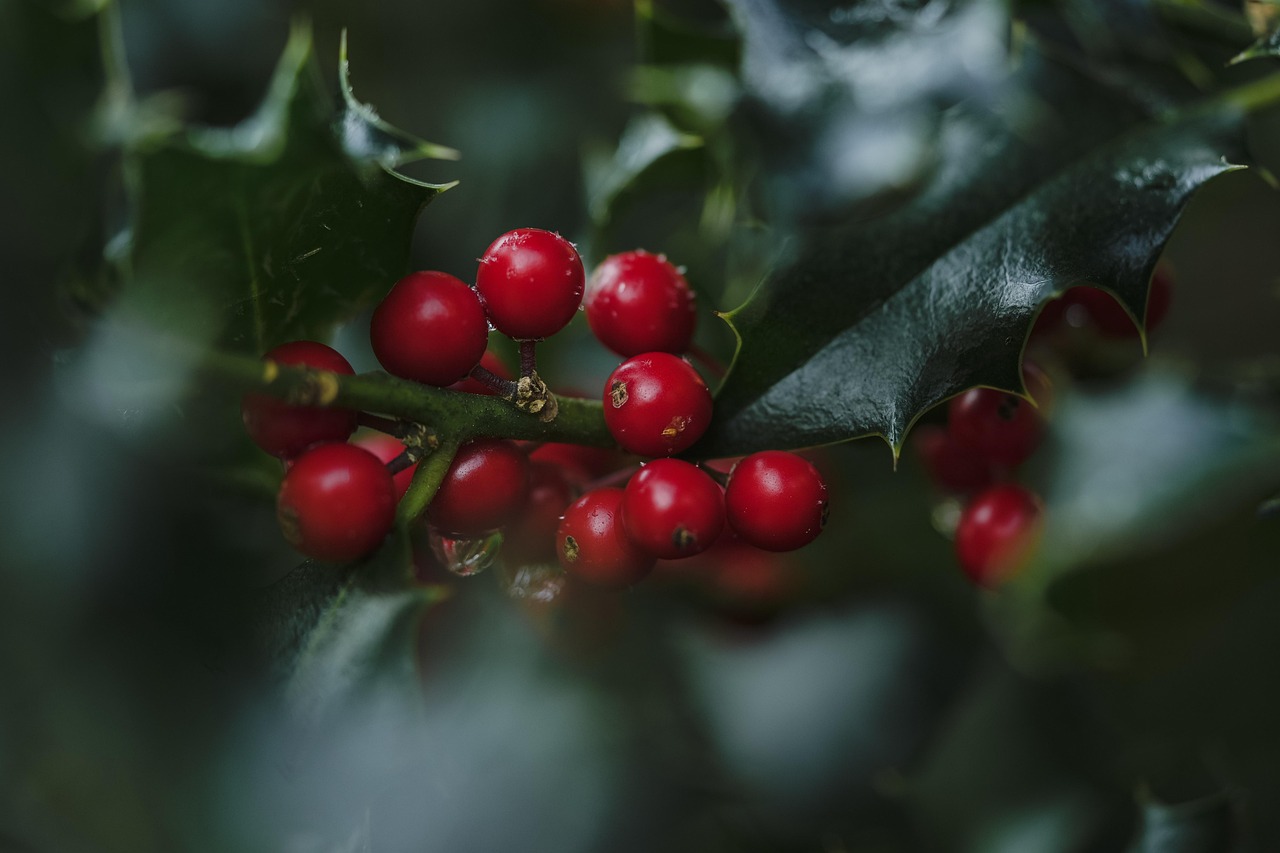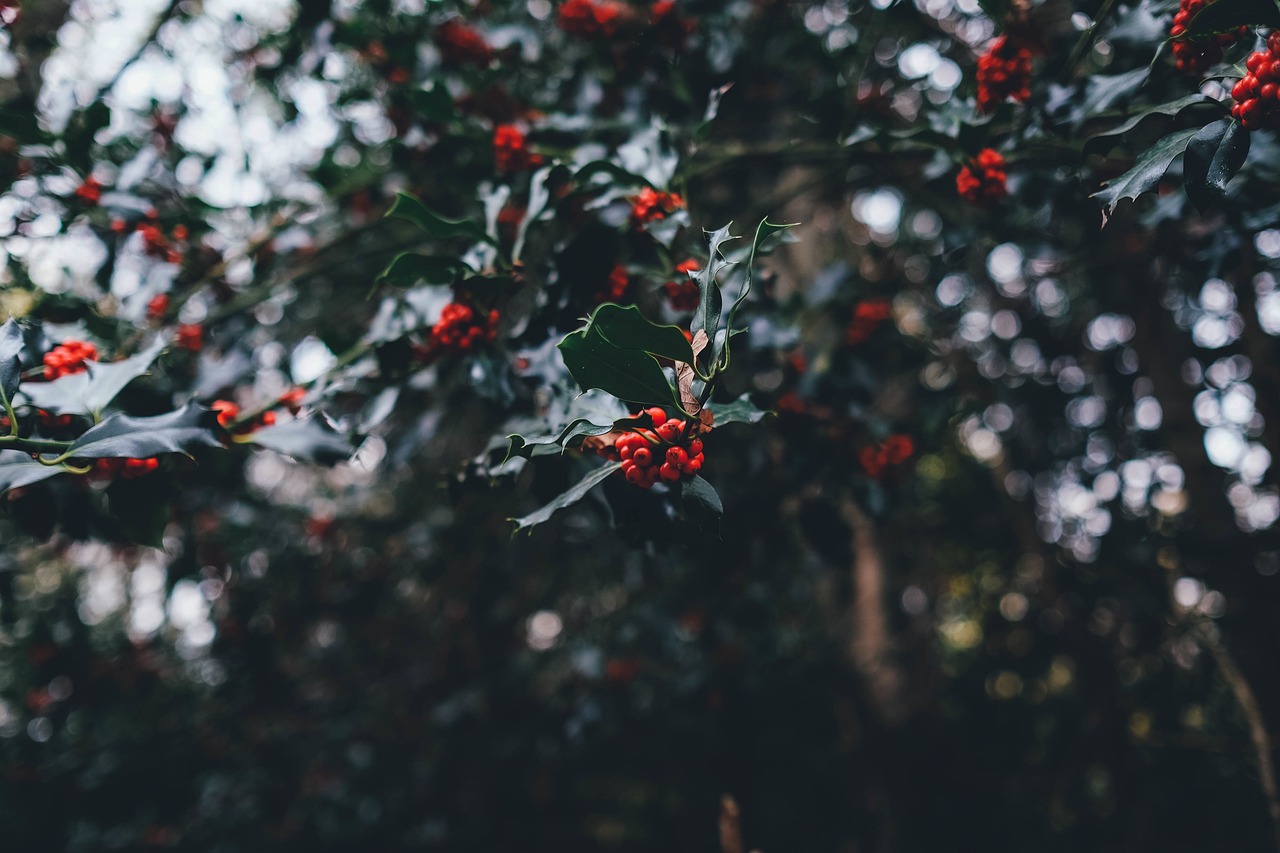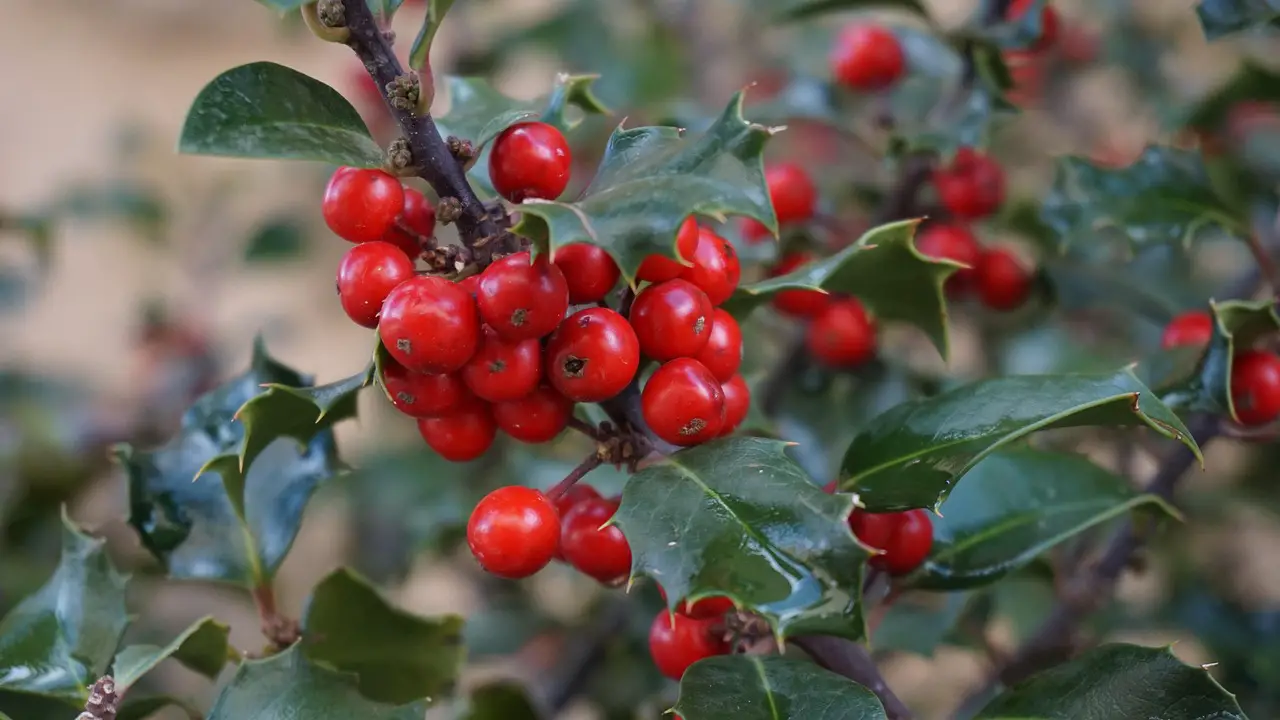The Eagleston Holly tree has a moderate growth rate, typically reaching heights of 10 to 15 feet in about 5 to 10 years. It is an excellent choice for screening and privacy due to its dense foliage and ability to thrive in various conditions.
The Eagleston Holly, scientifically known as Ilex x attenuata ‘Eagleston’, is a popular evergreen tree often used for landscaping and privacy screening. This tree is particularly favored for its lush, dark green leaves and its ability to maintain year-round foliage. Beyond aesthetics, the Eagleston Holly serves practical purposes in gardens and yards, especially in creating natural barriers against noise, wind, and unwanted views.

One of the key features of the Eagleston Holly is its growth characteristics. Understanding its growth rate can help homeowners and landscapers effectively plan their gardens. The tree grows at a moderate pace, making it suitable for those who want relatively quick privacy without excessive maintenance. Its dense branching structure allows it to fill out nicely, providing an effective screen in just a few years.
Growth Rate and Characteristics
The growth rate of the Eagleston Holly varies based on various factors, including soil quality, sunlight exposure, and watering practices. Typically, the tree grows between 1 to 2 feet per year under optimal conditions. Below are some factors that influence its growth:
- Soil Quality: Well-drained, slightly acidic to neutral soil promotes healthy growth.
- Sunlight: The tree thrives in full sun to partial shade; however, full sun maximizes its growth rate.
- Watering: Regular watering during dry periods is crucial for faster growth.
The Eagleston Holly can reach heights of approximately 10 to 15 feet and can spread about 5 to 10 feet wide. This makes it an ideal candidate for privacy hedges or screening plants in residential areas. The tree’s dense leaves not only serve as a visual barrier but also provide shelter for various birds and wildlife.

| Characteristic | Description |
|---|---|
| Height | 10 to 15 feet |
| Width | 5 to 10 feet |
| Growth Rate | 1 to 2 feet per year |
| Sunlight Needs | Full sun to partial shade |
| Soil Type | Well-drained, slightly acidic to neutral |
In addition to its growth attributes, the Eagleston Holly is also resistant to many pests and diseases, making it a low-maintenance option for homeowners. Its ability to adapt to various environmental conditions further enhances its appeal as a screening plant. Whether planted as a single specimen or grouped together for a hedge, this tree can add beauty and functionality to any landscape.
Another important aspect to consider is the planting space required for optimal growth. When planting Eagleston Hollies for screening purposes, it is recommended to space them about 3 to 5 feet apart. This allows each tree room to grow without competition for nutrients and sunlight, ensuring they develop into a full and lush barrier.
Overall, the Eagleston Holly tree presents an excellent option for homeowners looking for a fast-growing and attractive solution for privacy. Its moderate growth rate, coupled with its resilience and adaptability, makes it a top choice in many landscaping designs.

Optimal Growing Conditions for Eagleston Holly
To achieve the best growth rate and health for Eagleston Holly trees, certain growing conditions should be met. Understanding these conditions will help ensure that the trees thrive and reach their full potential. The following factors play a crucial role in the successful cultivation of Eagleston Hollies:
- Soil Type: Eagleston Hollies prefer well-drained soils that are slightly acidic to neutral. Sandy loam or clay loam soils are ideal.
- Watering Needs: Regular watering is essential, especially during dry spells. The soil should remain moist but not soggy.
- Sunlight Exposure: Full sun conditions encourage optimal growth. However, they can tolerate partial shade as well.
- Fertilization: Applying a balanced fertilizer in early spring can support growth and enhance foliage color.
Soil Preparation
Preparing the soil before planting is vital for establishing healthy Eagleston Holly trees. Here are some steps to prepare the soil:
- Test the Soil: Check the pH level and nutrient content to determine if amendments are needed.
- Add Organic Matter: Incorporate compost or well-rotted manure to improve soil structure and fertility.
- Till the Soil: Loosen the soil to a depth of 12 inches to promote root growth.
- Create Planting Holes: Dig holes that are twice as wide as the root ball and just as deep.
Pest and Disease Management
While Eagleston Hollies are generally resistant to many pests and diseases, proactive management is still important to maintain their health. Common issues include:
- Leaf Spot: A fungal disease that causes dark spots on leaves. Ensure good air circulation and apply fungicide if necessary.
- Aphids: Small insects that may appear on new growth. Regularly inspect plants and use insecticidal soap if infestations occur.
- Scale Insects: These pests can weaken the tree. Treat with horticultural oil during the dormant season.
Regular monitoring and maintenance can help prevent these issues from becoming serious problems. Keeping the area around the trees clean and free from debris also aids in reducing pest populations.

Watering Techniques
The method of watering can greatly affect the health of Eagleston Holly trees. Here are some effective techniques:
- Drip Irrigation: This method delivers water directly to the root zone, reducing waste and promoting deep root growth.
- Soaker Hoses: These hoses allow water to seep through slowly, providing consistent moisture to the soil.
- Hand Watering: For smaller areas, using a garden hose or watering can ensures targeted watering where needed.
Pruning and Maintenance Practices
Regular pruning is essential for maintaining the shape and health of Eagleston Holly trees. Proper maintenance not only encourages strong growth but also enhances the visual appeal of the trees.
- Timing: The best time to prune is late winter or early spring before new growth begins.
- Methods: Use sharp, clean tools to make clean cuts. Remove dead, damaged, or crossing branches to improve air circulation.
- Shaping: Lightly trim to maintain a desired shape, but avoid heavy pruning which can stress the tree.
Mulching Benefits
Applying mulch around Eagleston Holly trees offers several advantages:
- Moisture Retention: Mulch helps retain soil moisture, reducing the need for frequent watering.
- Weed Control: A layer of mulch suppresses weed growth, minimizing competition for nutrients.
- Soil Temperature Regulation: Mulch maintains more consistent soil temperatures, benefiting root health.
A 2 to 3-inch layer of organic mulch, such as wood chips or bark, is recommended around the base of the tree, keeping it a few inches away from the trunk to prevent rot.
Landscape Design Considerations
Eagleston Hollies are versatile plants that can be used in various landscape designs. Their adaptability makes them suitable for different settings, including:
- Privacy Screens: When planted closely together, they create an effective and attractive privacy screen.
- Foundation Plantings: Their neat form complements home foundations and enhances curb appeal.
- Accent Trees: Single specimens can serve as focal points in gardens or yards.
The dense foliage and attractive appearance of Eagleston Hollies make them a valuable addition to any landscape, providing both functional benefits and aesthetic appeal.
Seasonal Care for Eagleston Holly Trees
Understanding the seasonal care required for Eagleston Holly trees is essential for maintaining their health and promoting optimal growth. Each season presents unique challenges and opportunities for care that can enhance the tree’s development and appearance.
Spring Care
Spring is a crucial time for Eagleston Hollies as they emerge from dormancy. Here are some recommended practices for this season:
- Fertilization: Apply a balanced, slow-release fertilizer to provide essential nutrients. This helps support new growth.
- Pruning: Conduct any necessary pruning to remove dead or damaged branches and shape the tree as it begins to grow.
- Mulching: Refresh the mulch layer to retain moisture and suppress weeds, ensuring it remains a few inches away from the trunk.
Summer Care
Summer months can be hot and dry, requiring special attention to watering and protection.
- Watering: Ensure consistent watering, particularly during dry spells. Deep watering encourages root growth.
- Pest Monitoring: Regularly check for pests such as aphids or scale insects. Early intervention can prevent infestations.
- Weed Control: Keep the area around the trees free from weeds that can compete for nutrients and moisture.
Fall Care
As temperatures begin to drop, preparing Eagleston Hollies for winter is vital.
- Last Pruning: Perform any final pruning before winter sets in to avoid damaging the tree during cold weather.
- Mulch Application: Add a thicker layer of mulch to protect roots from freezing temperatures.
- Watering Needs: Continue to water until the ground freezes, ensuring that the trees have enough moisture stored before winter.
Winter Care
During winter, Eagleston Hollies require less maintenance, but some precautions should be taken to ensure their well-being.
- Protection from Extreme Cold: In areas with severe winters, consider wrapping young trees in burlap or using protective barriers against excessive wind and frost.
- Snow Management: Gently brush off heavy snow accumulation on branches to prevent breakage.
- Pest Inspection: Look for signs of pests that may remain active during winter, addressing any issues promptly.
Common Varieties of Holly for Screening
While the Eagleston Holly is an excellent choice for screening and privacy, there are other holly varieties worth considering. Understanding these options can help in selecting the right tree for specific landscaping needs.
| Variety | Description | Growth Rate |
|---|---|---|
| Eagleston Holly | A hybrid with dense foliage and moderate growth, great for privacy screens. | 1-2 feet per year |
| Nellie R. Stevens Holly | A fast-growing variety with glossy leaves and red berries, ideal for hedges. | 2-3 feet per year |
| American Holly | A native species known for its striking red berries and traditional holiday appeal. | 1-2 feet per year |
| Chinese Holly | A hardy variety with spiny leaves that offers excellent privacy screening. | 1-2 feet per year |
Environmental Benefits of Eagleston Holly
Eagleston Hollies provide numerous environmental benefits beyond their aesthetic appeal. Some of these benefits include:
- Wildlife Habitat: The dense foliage offers shelter and nesting sites for birds and small animals.
- Erosion Control: The root system helps stabilize soil, preventing erosion on slopes and hillsides.
- Air Quality Improvement: As a plant, Eagleston Holly contributes to improved air quality by absorbing carbon dioxide and releasing oxygen.
Eagleston Hollies not only enhance landscape beauty but also play a significant role in promoting ecological balance. This makes them a valuable addition to any garden or property.
Caring for Eagleston Holly in Different Climates
The adaptability of Eagleston Hollies allows them to thrive in various climates. However, specific care techniques may be necessary based on regional conditions:
Tropical Climates
In warmer climates, ensure adequate moisture during dry seasons. Mulch can help retain soil moisture and reduce evaporation.
Temperate Climates
This region’s seasonal changes require attention to watering in summer and protection from cold in winter. Regular monitoring of soil moisture is essential.
Cold Climates
In colder areas, late fall care becomes essential. Applying mulch before winter and protecting young trees from frost will help them survive harsh conditions.
Cultivating Eagleston Hollies allows homeowners to enjoy their beauty while contributing positively to the environment. With the right care and conditions, these trees will flourish and provide privacy for years to come.
Additional Considerations for Eagleston Holly Trees
In addition to the previously discussed care practices and climatic considerations, several other aspects can contribute to the successful growth and maintenance of Eagleston Holly trees. Being mindful of these factors can enhance the overall health and appearance of your trees.
Companion Planting
Choosing the right companion plants can benefit Eagleston Hollies by enhancing soil health and providing additional visual interest in the landscape. Some suitable companion plants include:
- Azaleas: Their vibrant flowers contrast beautifully with the dark green foliage of Eagleston Hollies.
- Boxwood: This evergreen shrub can complement the holly’s shape and create a lush landscape.
- Ferns: Adding ferns can provide texture and fill in shaded areas beneath the holly trees.
Companion planting can also support biodiversity and attract beneficial insects, which can help improve overall plant health.
Seasonal Color and Attraction
Eagleston Hollies not only offer privacy but also seasonal color changes throughout the year. In spring, new growth appears as vibrant green leaves, while in winter, the red berries provide a striking contrast against the snow. This seasonal variation enhances the landscape’s appeal and attracts various birds, making it an attractive feature in any garden.
Cost Considerations
The cost of planting and maintaining Eagleston Hollies can vary based on several factors:
- Initial Investment: The price of purchasing young trees can range based on size and local availability.
- Maintenance Costs: Regular maintenance tasks such as pruning, fertilization, and pest control will incur ongoing costs.
- Watering Needs: Consider potential water expenses, especially during dry periods.
Despite these costs, many homeowners find that the long-term benefits of having a dense privacy screen and enhanced property value outweigh the initial investments.
Environmental Impact of Planting Eagleston Hollies
Planting Eagleston Hollies contributes positively to the environment in various ways. These trees play a role in:
- Carbon Sequestration: Like all trees, Eagleston Hollies absorb carbon dioxide, helping mitigate climate change.
- Habitat Creation: They provide shelter and food for a variety of wildlife, including birds and beneficial insects.
- Soil Health Improvement: The root system aids in soil stabilization and prevents erosion, promoting healthier landscapes.
By incorporating Eagleston Hollies into gardens, homeowners can enhance their ecological footprint while enjoying the beauty and privacy these trees offer.
Final Thoughts
The Eagleston Holly tree presents an excellent option for those seeking a beautiful, functional solution for privacy and screening in their landscapes. With its moderate growth rate, adaptability to various climates, and rich environmental benefits, it stands out as a favorite among homeowners and landscapers alike.
Proper care throughout the seasons is essential for optimal growth. From appropriate watering practices to pest management and seasonal pruning, each step plays a vital role in ensuring the health of these trees. Additionally, considering companion plants, understanding potential costs, and recognizing their environmental impact further enriches the experience of cultivating Eagleston Hollies.
Ultimately, whether you live in a tropical, temperate, or cold climate, the Eagleston Holly can thrive with the right knowledge and care. Its ability to provide year-round beauty, privacy, and ecological benefits makes it a valuable addition to any landscape design.
By investing time and resources into nurturing these trees, homeowners can enjoy their many advantages for years to come. With patience and proper attention, Eagleston Hollies will flourish, creating a picturesque and private retreat right in your backyard.
